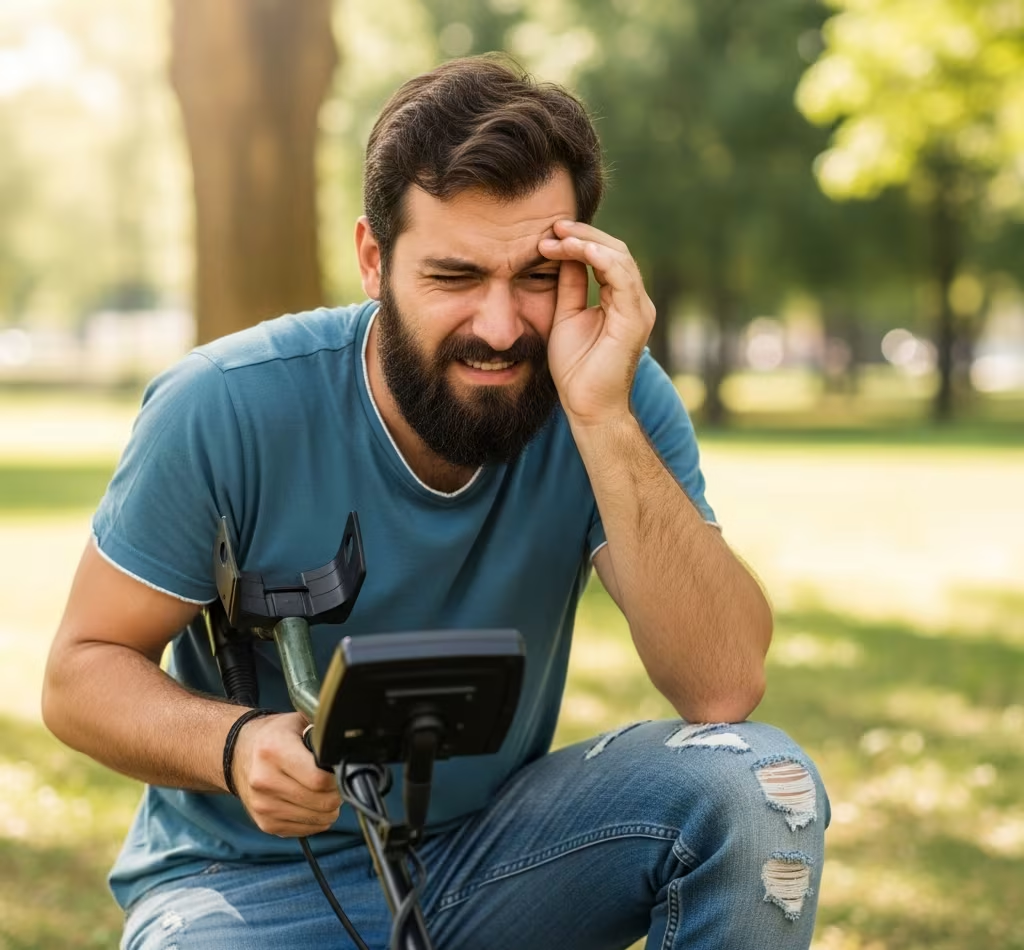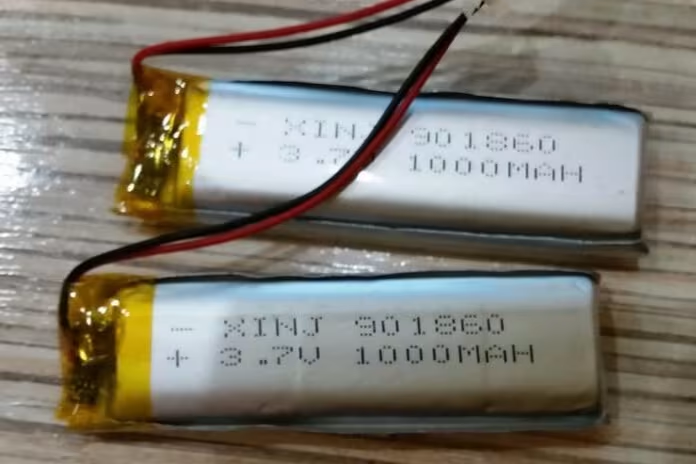When AI Meets Metal Detectors: More Than Just Better Beeping
Last summer, I found myself sweating in the Middle Eastern heat (and seriously questioning my life choices—I hate hot weather, always have), watching a research team test some new metal detection equipment at an archaeological dig. The lead archaeologist was practically bouncing with excitement as she showed me what their AI-enhanced detector had found that morning. “Look,” she said, pulling up the data on her tablet, “we’re not just finding more stuff anymore. We’re actually understanding what we’re looking at before we even start digging.”
That conversation stuck with me for months, probably because I’m the type of person who gets obsessed with random technological details. My wife says I collect obscure facts like some people collect stamps. Anyway, here’s the thing: metal detectors have been basically the same annoying, beeping boxes for decades. But now? AI is completely flipping the script.
The Old Problems That Drove Everyone Crazy

Anyone who’s ever used a traditional metal detector knows the frustration. You’re out there swinging your coil around, and every few steps: BEEP. Could be a Roman coin. Could be a rusty nail. Could be a piece of aluminum foil some tourist dropped last week. (Side note: why do tourists always leave the most random garbage in the most pristine locations? It’s like they’re allergic to trash cans.)
Then there’s the soil issue. Mineralized ground basically turns your detector into a random noise generator. The machine starts screaming at you about “targets” that turn out to be nothing more than iron deposits that have been sitting there since the Pleistocene. And don’t even get me started on the depth versus accuracy problem—you can detect deep, or you can detect precisely, but good luck doing both. I’ve watched grown archaeologists nearly throw their detectors in frustration over this exact issue. Hell, I almost threw one myself after spending three hours digging up what turned out to be a corroded tent stake.
These aren’t just minor inconveniences. They’re fundamental limitations that have shaped how we approach everything from treasure hunting to airport security checkpoints.
Enter the Smart Metal Detector
Here’s where things get interesting, and where I admit I’m probably way more excited about this than any normal person should be. Modern AI-powered metal detectors don’t just sense metal—they think about what they’re sensing. Instead of giving you a generic “hey, there’s metal down there” signal, these systems crunch multiple data streams simultaneously: signal characteristics, ground composition, target depth, shape analysis, you name it.
The magic happens in the pattern recognition algorithms. These systems have been trained on massive databases of known objects, so when your detector hits something, it’s not just measuring the metallic response—it’s comparing that signature against thousands of similar finds. The result? Your detector can now tell the difference between a bottle cap and a medieval buckle before you pick up your shovel. (Finally! Do you know how many bottle caps I’ve excavated in my life? Too many. Way too many.)
What really impressed me was watching the real-time ground compensation in action. The AI metal detector continuously analyzes soil conditions and adjusts the detection parameters on the fly. No more manual ground balancing, no more constant recalibration. The system just… figures it out. It’s honestly a little spooky how well it works.
Where an AI Metal Detector Actually Matters

The archaeological applications are obvious and exciting, but the industrial uses are equally compelling (though admittedly less fun to talk about at dinner parties). Food processing plants are using AI-enhanced detectors to catch metal contamination with scary-good accuracy. We’re talking about systems that can distinguish between a dangerous steel fragment and a harmless staple on packaging—something that would have been impossible just five years ago.
Security screening is getting smarter too, thank god. I fly a lot for work, and I’m so tired of having to explain my belt buckle to TSA agents. Instead of those one-size-fits-all metal detector arches that go off if you’re wearing steel-toed boots, new AI systems can actually analyze threat profiles. They’re learning to ignore belt buckles while staying alert for actual weapons. Progress!
But archaeology is where I’ve seen the most dramatic changes. Sites that were considered “fully excavated” decades ago are suddenly yielding new discoveries. Teams are finding artifacts at depths that traditional detectors couldn’t reliably reach, with precision that older equipment couldn’t match. More importantly, they’re gathering contextual data during the detection phase, which helps preserve the archaeological story instead of just collecting random objects.
What’s Coming Next
The really exciting development is sensor fusion, which sounds like something out of Star Trek but is actually happening right now. Imagine a detection system that combines AI-enhanced metal detection with ground-penetrating radar and spectral analysis, all processed by machine learning algorithms that can build a three-dimensional model of what’s underground before you disturb anything. I mean, come on—that’s basically magic.
Predictive maintenance is another game-changer, though I’ll admit this is where my inner tech nerd really starts showing. These systems monitor their own performance and can tell you when components are wearing out or when calibration is drifting. Some detectors now learn from each use, building up local knowledge about soil conditions and typical finds in specific areas. It’s like having a detector that gets smarter every time you use it.
The Human Touch Still Matters

Despite all this technological wizardry, the most successful applications I’ve seen still rely heavily on human expertise. Dr. Chen put it perfectly: “The AI makes me way more efficient, but I’m still the one who understands why a particular artifact might be significant or how it fits into the historical picture.”
The best operators treat AI as a really sophisticated research assistant rather than a replacement for their own knowledge and intuition. The technology handles the pattern recognition and signal processing grunt work, freeing up humans to focus on interpretation and decision-making.
The Bigger Picture
What we’re witnessing isn’t just incremental improvement in metal detection—it’s a fundamental shift in how we approach subsurface investigation. These AI-enhanced systems are revealing information that was always there but invisible to traditional detection methods.
For professionals across multiple fields, this represents both tremendous opportunity and a learning curve. The tools are becoming more powerful, but they also require new skills and new ways of thinking about detection methodology.
Standing at this technological crossroads, one thing seems clear: the future of metal detection isn’t really about finding metal anymore. It’s about understanding our discoveries in ways that were simply impossible before. And honestly? That’s pretty exciting.

My name is Paul and I am the founder of Detector For Metal, a dedicated resource for metal detecting enthusiasts seeking to uncover historical treasures and connect with the past using the latest technology. As a stay-at-home dad and family man, I’ve found metal detecting to be the perfect hobby that combines family adventure with historical learnings for the whole family.
As a father, I’m deeply committed to passing on this hobby to the next generation of detectorists, starting with my own children. I share advice on everything from metal detecting with kids to exploring the top 10 metal detecting sites you never thought about. My methodical approach to the hobby goes beyond the thrill of discovery—it’s about creating family traditions while preserving history and sharing the stories of those who came before us.


